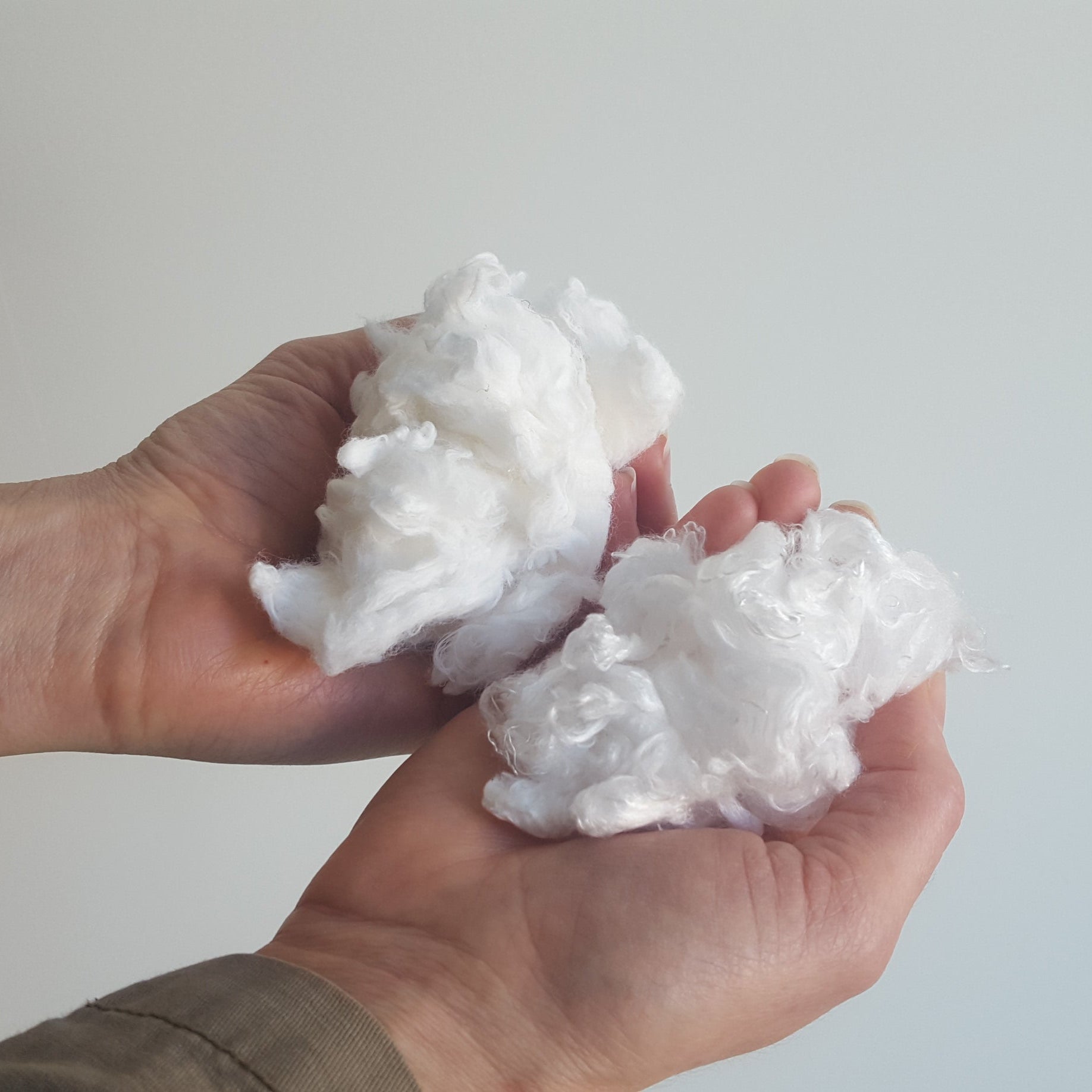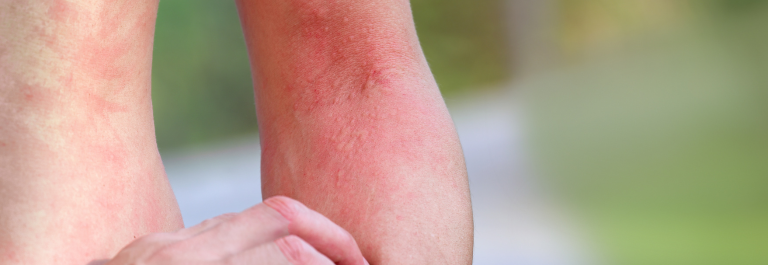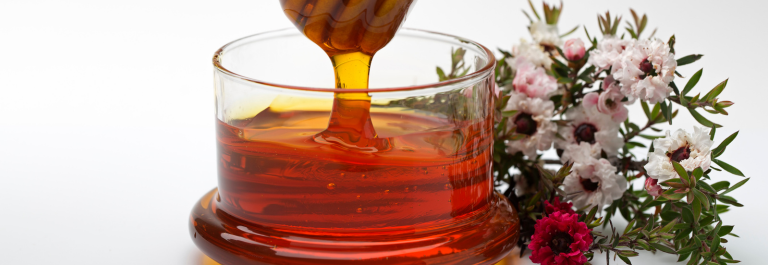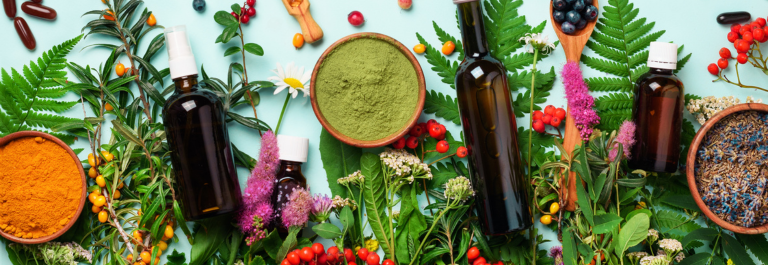Your skin is your body's first line of defense. And given everything that it endures day-to-day (from the friction of your clothing to sudden temperature changes and the occasional cut or bruise), it is no wonder that most people experience sensitive skin at some point throughout their lifetime.
Having said this, there is a fine line between a typical bout of dry skin and a problematic skin infection or rash.
According to the National Eczema Association, dermatitis is an umbrella term that describes a range of itchy skin diseases that affect over 10% of all Americans.
Throughout this post, we'll break down everything you need to know about:
-
The common symptoms of dermatitis
-
The common causes of dermatitis
-
The best natural treatment methods for dermatitis
Keep reading to learn more about how to soothe and naturally prevent itchy skin infections today.
What is Dermatitis?
Dermatitis is a common skin condition caused by genetic and environmental factors.
The three most common forms of dermatitis are atopic dermatitis (eczema), allergic contact dermatitis, and seborrheic dermatitis (dandruff).
Symptoms of Dermatitis
While each variety of dermatitis will present in different ways, some key symptoms across the board include:
-
Dry, inflamed skin appears red on lighter-toned skin and brown or grey on darker-toned skin.
-
Intense itching.
-
Scaly skin patches that may flake, blister, crack, or ooze.
-
In severe cases, a dermatitis rash appears swollen.
-
Skin thickening.
-
While dermatitis is itchy and uncomfortable, it is not contagious.
- Eczema scars
Causes of Dermatitis
The cause of each person's dermatitis will invariably differ depending on the type of dermatitis they're experiencing, their unique genetic makeup, the immune system, and family history.
Atopic Dermatitis
For people with atopic dermatitis eczema, an itchy rash may be caused by an overactive immune system which drives the body to attack its healthy cells at the skin barrier. Developing atopic dermatitis often stems from both genetic and environmental components.
Atopic dermatitis is often a life-long chronic skin condition characterized by repetitive flares and remissions. Most typically, atopic dermatitis will develop as a form of infantile eczema; however, this skin disorder may also show later as adult eczema.
Because atopic dermatitis eczema is part of the atopic triad, patients with this skin disease are more likely to develop asthma and other allergies, such as hay fever.
Other types of eczema include dyshidrotic eczema, which causes burning and itchy skin on the soles of your feet and the palms of your hands, and discoid eczema, which manifests as a long-term skin condition that causes the skin to become itchy, reddened, swollen and cracked in circular patches.
Contact Dermatitis
In the case of contact dermatitis, symptoms will flare as part of an allergic reaction to specific environmental triggers at the skin's barrier.
For example, allergic contact dermatitis could be sparked by contact with certain plants like poison ivy, pollen, pests, dust mites, specific skin products, chemicals within your laundry detergent, or even certain metals and food allergies such as dairy.
Seborrheic Dermatitis
Seborrheic dermatitis, or infant cradle cap, tends to develop across body parts where the skin is oiler - such as on the back, behind the ears, on the sides of the nose, and on the scalp.
While the exact cause is unknown, seborrheic dermatitis is more likely to occur in males.
Common triggers include illness, stress, harsh chemicals, hormone changes, and weather shifts.
Stasis Dermatitis
This dermatitis develops in people with poor blood circulation, resulting in an itchy rash across the lower legs and ankles. It is caused by a problem with your veins, causing fluid and pressure to build.
How To Treat Dermatitis Naturally?
If you or a loved one do develop dermatitis, don't fret. Thankfully, there are many effective ways to mitigate your symptom flares and get a handle again on your skin conditions through effective skin care.
Moisturize
Whether you're struggling with contact dermatitis following a run-in with poison ivy or your poor circulation has prompted stasis dermatitis, it is helpful to know that most forms of this skin disorder are characterized by dry skin and intense itching, which physically weakens the skin's barrier, sometimes even leading to cracks and bleeding.
It is imperative, therefore, that you're able to restore your skin's natural moisture reserves, soothing your itching and repairing your skin barrier.
Nourish + Hydrate Manuka Balm - As a gentle skin care solution, we'd recommend applying this creamy balm to your affected skin area. Made from Organic Sunflower Oil, Organic Camellia Seed Oil, Organic Yellow Beeswax, Lactobacillus Ferment, and Active 16+ New Zealand Manuka Honey, this cream has been specifically designed to deeply nourish and soothe even the most aggravated and itchy skin.
Because people with atopic dermatitis tend to have a sensitive immune system, there is also the risk of developing a skin infection. That's why it is reassuring to know that manuka oil is more potent than tea tree oil when battling bacteria and fungus, helping to combat skin infections.
Natural Shower Routine
While it might be tempting to step into a steaming, hot shower at the end of a long day, did you know that hot water can worsen your dermatitis symptoms, irritating inflamed skin? This is especially the case when you factor in all those sweet-smelling, artificial chemical skin products you're using.
Instead, run yourself a lukewarm shower or bath and switch out your current bath soap for a fragrance-free, natural alternative.
Coconut and Sunflower Oil Soap Bar - This fatty cleanser and moisturizer combine coconut oil, shea butter, and sunflower oil. Gentle enough for babies, it's the best natural soap for eczema, psoriasis, sensitive skin, and more.
After a shower or bath, gently pat your skin dry with a gentle towel rather than rubbing vigorously which can make your symptoms worse.
Use Wet Wrap Therapy with Hypoallergenic Fabrics
Wet wrap therapy is a traditional method for treating itchy skin in targeted areas.
-
First, an intensive moisturizer is applied to the affected skin, such as the Nourish + Hydrate Manuka Balm mentioned above.
-
Secondly, a gentle fabric or gauze is slightly dampened in lukewarm water and then wrapped around the moisturized areas to help keep the skin hydrated. (When treating a skin rash caused by allergic contact dermatitis, we'd recommend using hypoallergenic fabrics. The Remedywear™ Eczema and Psoriasis Sleeves have been designed explicitly for eczema-prone skin, and the clothing is a brilliant option for eczema wet and dry wraps. The garments are made of soothing, soft TENCEL and anti-microbial and anti-bacterial zinc oxide fibers).
-
Finally, these wet wraps are then covered with a second dry layer to allow you to wear the damp wrap more comfortably under your pajamas or clothes.
This intensive hydration therapy is excellent for soothing even the itchiest skin, offering deep relief, especially when practiced overnight.
Identify and Soothe your Itchy Rash Today
Use these tips to decide whether your allergic reaction or itchy skin breakout could be a sign of dermatitis, harnessing the power of natural ingredients to restore your dry skin today.










